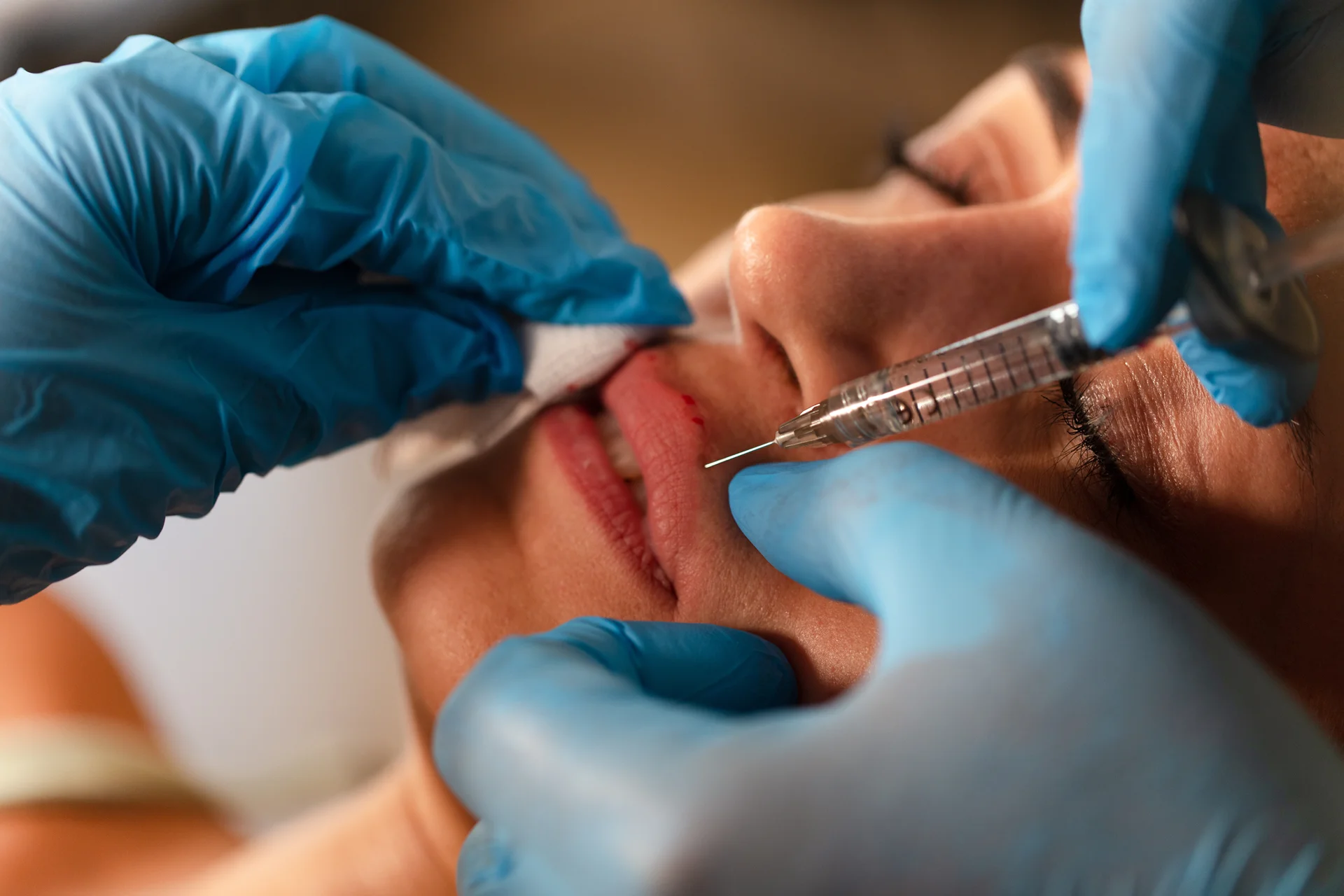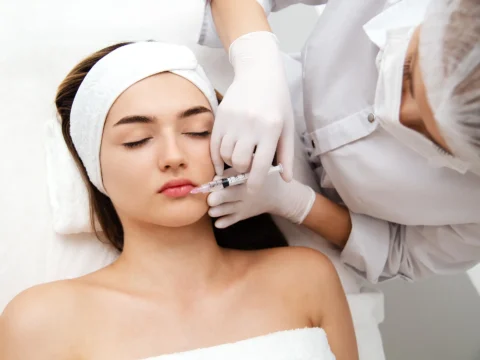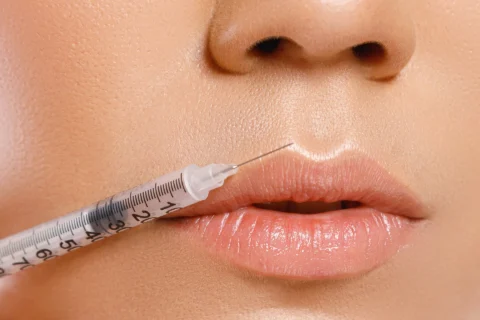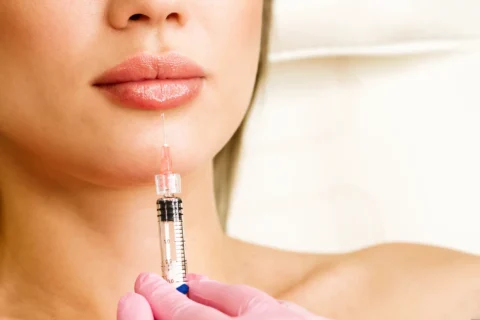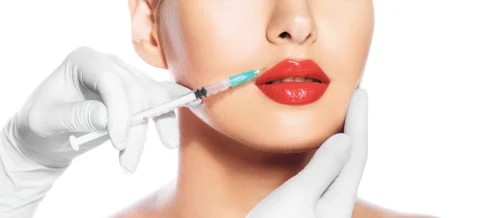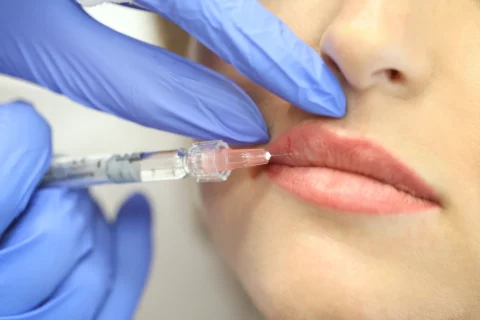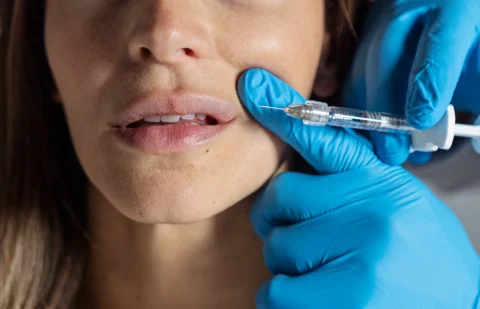Resolving Overfilled Lip Fillers: Assessing Risks, Surgical Options, and Choosing the Ideal Provider
Pursuing ideal lips can sometimes cross the line, resulting in overfilled lip fillers that look unnatural and pose significant health risks. In extreme cases, where the lips are overly filled, surgery might be the only way to fix them. This article explores when surgery becomes necessary for removing overfilled lip fillers.
What Are Lip Fillers?
Lip fillers are injectable cosmetic treatments usually containing hyaluronic acid, a molecule that binds to water and provides volume. Common branded options include Juvederm Volbella and Restylane Silk. Small amounts of filler injected into the lips with a fine needle add subtle volume and definition.
How Can Lip Fillers Be Overfilled?
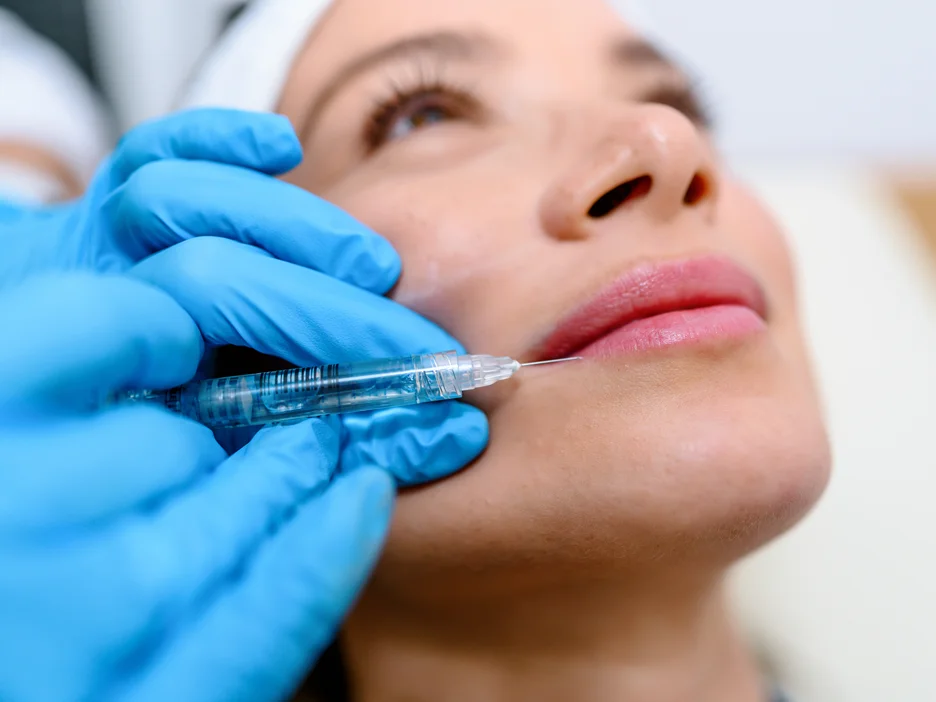
Overfilling of lip fillers can result in a noticeably unnatural and exaggerated appearance. The common indicators of overfilled lips are:
- Unusual roundness and protrusion, giving the lips an unnatural shape.
- Loss of the cupid’s bow, the distinct curve on the upper lip.
- Visible irregularities such as lumpiness, bruising, and asymmetry.
- Impaired lip movement, affecting essential functions like speaking and eating.
- Persistent dryness and cracking, indicating stressed lip tissue.
This overfilling typically occurs when an excessive amount of filler is injected in a single session.
Alternatively, it can accumulate over time through multiple touch-up treatments. Despite warnings from professionals, some individuals persistently seek an excessively full lip appearance.
Less-qualified injectors may also overfill without realizing it. Regardless of how it happens, too much filler stretches the delicate lip tissue and causes complications.
When Is Surgical Intervention Necessary for Overfilled Lip Fillers?
While many cases of overfilled lips can be resolved non-surgically, typically through the use of hyaluronidase to dissolve excess hyaluronic acid fillers, there are specific situations where surgery is required:
- Chronic Damage and Scar Tissue Formation: Surgery may be necessary if overinjection leads to long-term damage, including the development of scar tissue.
- Ineffective Non-Surgical Treatments: If attempts to correct the issue non-surgically do not yield satisfactory results, surgical intervention might be considered.
- Severe Irregularities: The presence of deep, embedded irregularities such as lumps, cysts, or hard nodules in the lips may necessitate surgical removal.
- Serious Side Effects: Surgery is considered in cases where there are significant side effects, like impaired blood circulation.
- Migration Beyond Lip Borders: If filler material has migrated outside the intended lip area, surgical procedures may be required to correct this.
In these scenarios, surgery is required to eliminate problem areas, enhance the structure and function of the lips, and address any resulting issues.
Is It Possible to Undergo Surgery for Non-Hyaluronic Acid (HA) Filler Corrections?
A study published in the Aesthetic Surgery Journal titled “Surgical Lip Remodeling After Injection of Permanent Filler” presents a surgical method to correct lip deformity caused by permanent filler injections.
The surgical technique involved removing as much excess filler and fibrotic tissue as possible.
The study emphasizes the importance of informing patients that the complete removal of permanent filler is not always possible. However, most of the patients were pleased with the results.
What Are the Risks of Overfilled Lip Fillers?
Having too much filler injected into the small, sensitive lip area carries both cosmetic and medical risks:
- Visible bruising, bumps, and asymmetry.
- Restricted movement and difficulty speaking, eating, and drinking.
- Dryness, cracking, peeling, bleeding, and ulcers due to stretched tissue.
- Numbness or altered sensation due to compressed nerves.
- Impeded blood flow leading to bluish discoloration.
- Infections when bacteria enter damaged tissue and gaps between filler compartments.
- Biofilm formation over time as bacteria accumulate on filler.
- Granulomas or cysts as the immune system reacts to trapped filler material.
- Skin necrosis and tissue death from obstructed blood supply.
- Fillers moving out of the lip structure and into surrounding areas.
The potential complications underscore the importance of cautious, conservative filler injection only up to the personal tolerance threshold. Patients should speak up about discomfort and providers must listen.
How Is Surgery Performed to Correct Overfilled Lip Fillers?
Surgical repair of overfilled lips involves:
- Excising excess filler: The surgeon makes small incisions along the vermillion border to access and cut away problem areas. Unwanted filler material is removed.
- Dissolving remaining filler: Injectable enzymes like hyaluronidase are applied to dissolve filler fragments still embedded.
- Lip structure repair: Damaged tissue is reshaped and sutures repair any tears or irregularities.
- Addressing complications: Any resulting issues like cysts or blocked blood flow are corrected.
- Lip lifts: Shortening or lifting the upper lip enhances shape when filler weighed it down over time.
The procedures are done under local anesthesia combined with IV sedation. Using meticulous techniques, an experienced cosmetic surgeon sculpts smooth, symmetrical lips. The priority is restoring natural form and function.
What Can Patients Expect During Recovery from Lip Filler Correction Surgery?
Recovery from surgical lip filler correction involves:
- 1 week of swelling, bruising: Ice application and head elevation reduce swelling. Bruising fades over days.
- 2 weeks of oral sensitivity: Patients should stick to soft foods and avoid extreme temperatures.
- 1 month for incisions to heal: Incision sites blend well into the vermillion border once fully healed.
- 2-3 months for final results: Lips regain normal shape, suppleness, and sensation.
Proper aftercare minimizes risks during the recovery period. Patients should avoid smoking, sun exposure, and trauma.
Gentle lymphatic drainage massage can help ease swelling. Strictly follow all post-op care instructions from the surgeon.
While recovery takes patience, most patients find the process very much worthwhile for enjoying natural-looking, functional lips once again.
Can Overfilled Lip Fillers Be Prevented?
The ideal solution is preventing overfilled lips in the first place through proper filler injection practices:
- Choose an experienced, qualified injector, preferably a plastic surgeon or dermatologist.
- Communicate your cosmetic goals clearly at the consultation.
- Start with a conservative amount of filler and build up gradually.
- Avoid excessive touch-up sessions in pursuit of fuller lips.
- Speak up about any discomfort or telltale signs of overfilling.
- Take a gradual approach allowing the tissue to adjust at each stage.
- Follow proper aftercare instructions to avoid complications and risks.
Being patient and avoiding a rush to maximum fullness reduces overfilling risks. Moderation is key when augmenting lip volume.
What Are the Alternatives to Surgery for Managing Overfilled Lip Fillers?
In cases of mild to moderate overfilling where there are no severe complications, several non-surgical methods can help restore a more natural lip appearance:
- Hyaluronidase Injections: These can gradually dissolve some of the excess filler.
- Massage: This technique can help break up and redistribute filler that’s unevenly clumped.
- Natural Breakdown: Sometimes, just waiting for the filler to naturally dissolve over time is effective.
- Avoiding Additional Fillers: Stopping further injections can prevent worsening the overfilling.
However, surgical intervention is still required for certain patients as addressed earlier. When overfilling leads to significant structural and functional issues, surgery becomes a necessary step.
Non-surgical methods don’t guarantee complete recovery in such instances, and surgical intervention may be the only viable option to fully address the complications.
What Are the Long-Term Implications of Surgical Correction for Overfilled Lip Fillers?
With properly executed surgery by an expert, patients can enjoy permanently improved lip structure, shape, and function. However, some considerations remain:
- Scars along the vermillion border are inevitable but fade and blend well over time.
- Future filler injections should utilize more conservative amounts to avoid repeat overfilling. Maintenance touch-ups can carefully augment volume as needed.
- Numbness often persists if nerves were severely compressed initially by overfilled filler.
- The lips may always feel slightly firmer and less elastic after surgical repair.
- If lip lifts were required, some visible shortening of the upper lip persists.
Overall, most patients are highly satisfied with their final results and the long-term improvements in aesthetics and daily life. Avoiding overfilled lips from the outset remains ideal, but surgical correction can effectively restore natural structure when needed.
How to Choose the Right Professional for Lip Filler Injections?
Selecting an expert injector from the start reduces overfilling risks:
- Board-certified plastic surgeons and dermatologists have the highest qualifications and best grasp of facial anatomy.
- Check for many years of focused experience performing lip filler injections.
- Verify membership in accredited societies like the ASAPS and AAD.
- Review before/after photos to evaluate skill and preferred outcomes.
- Opt for someone who takes a very conservative approach.
- Ensure they listen closely to your concerns and goals.
Reputable professionals know when to advise restraint and won’t overfill simply to satisfy requests. Trust is required to achieve a natural enhancement.
Here is more content continuing the article:
What Results Can Be Expected After the Surgical Correction of Overfilled Lips?
After undergoing surgery to correct overfilled lips, patients can look forward to significant improvements both cosmetically and functionally:
- Natural Lip Appearance: Lips regain their natural shape, size, and symmetry.
- Reduced Volume and Protrusion: The surgery addresses issues of excessive fullness and unnatural protrusion.
- Smooth Texture: The procedure eliminates lumps or nodules, resulting in even lip texture.
- Improved Functionality: Patients find it easier to speak, eat, and drink post-surgery.
- Healthy Lip Tissue: The lips no longer suffer from persistent dryness or cracking.
- Seamless Healing: Incision sites heal well, blending into the natural contours of the lips.
- Restored Sensation: Nerve recovery can lead to regained sensation in the lips.
The full benefits of the surgery typically become evident over a 2-3 month recovery period. With a skilled surgeon, patients can finally enjoy shapely, kissable lips reflecting their unique beauty.
Conclusion
Overfilling lip fillers can lead to significant aesthetic and functional issues, sometimes necessitating surgical intervention. However, the key to avoiding such complications lies in prevention.
Choosing a skilled and experienced injector who understands the importance of moderation and patient-specific needs is crucial. By setting realistic expectations and opting for a conservative approach to lip enhancement, patients can achieve a beautiful and natural result.
Remember, while surgical correction is an effective solution for overfilled lips, the best strategy is always careful, informed decision-making and a commitment to maintaining the natural harmony of your facial features.
FAQs About Surgery for Overfilled Lip Fillers
What Can Go Wrong with Lip Fillers?
Complications from lip fillers, such as dermal fillers or hyaluronic acid injections, can include visible bruising, bumps, asymmetry, restricted movement, dryness, cracking, numbness, impeded blood flow, infections, granulomas, skin necrosis, and migration of fillers beyond lip borders.
What Is Considered a Severe Case of Overfilling?
A severe case of overfilling, often requiring the expertise of a board-certified plastic surgeon, includes chronic damage, scar tissue formation, deep embedded irregularities like lumps or cysts, significant side effects affecting lip function, and filler migration beyond lip borders.
What Are the Signs That Surgery Is Needed for Overfilled Lip Fillers?
Surgery may be necessary for overfilled lip fillers when there’s chronic damage, scar tissue, ineffective non-surgical treatments, severe irregularities, or serious side effects like impaired blood circulation.
Can Surgery Address Complications from Non-Hyaluronic Acid Fillers?
Yes, surgical procedures can correct complications from non-HA fillers, focusing on removing excess filler and fibrotic tissue, although complete removal of permanent filler may not always be possible.
What Does the Surgical Correction of Overfilled Lips Involve?
The procedure typically involves excising excess filler, dissolving remaining filler, repairing lip structure, and addressing any complications like cysts or blocked blood flow.
Why Choose Ethos for Your Lip Filler Journey?
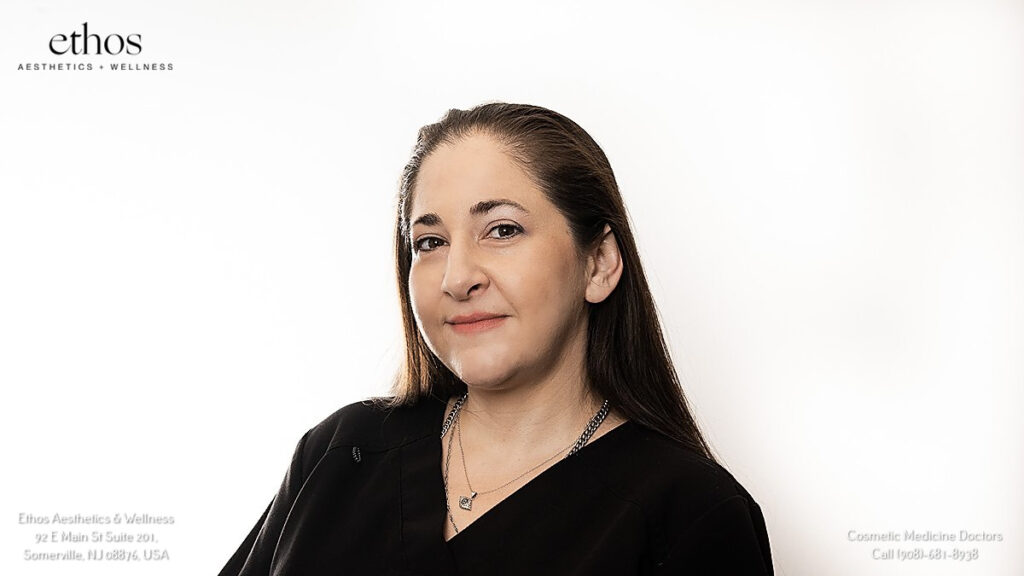
- Expertise of Dr. Hardik Soni: With a deep understanding of facial aesthetics, Dr. Soni ensures that each lip filler procedure is tailored to meet your individual needs and aesthetic goals.
- Advanced Techniques: We use the latest techniques and high-quality materials, like Hyaluronic Acid fillers, to provide you with the safest and most effective treatment.
- Comprehensive Consultation: Our team takes the time to understand your desires and concerns, ensuring a result that is both beautiful and natural-looking.
Addressing Overfilled Lips with Precision and Care
In cases where previous lip fillers have led to overfilling or complications, Dr. Soni and his team are adept at providing corrective solutions.
We offer both surgical and non-surgical interventions to address issues such as asymmetry, lumps, or migration of fillers.
Our surgical expertise ensures that if a corrective procedure is needed, it is performed with the utmost care, aiming to restore both the aesthetics and functionality of your lips.
Your Safety and Satisfaction Are Our Priority
At Ethos Aesthetics + Wellness, your safety is our priority. We adhere to the highest standards of medical care and use only FDA-approved products.
Our team is committed to ensuring your experience is comfortable, informative, and tailored to your specific needs.
Take the First Step Towards Your Ideal Look
Schedule a consultation with Dr. Hardik Soni and the Ethos team today. Let us help you achieve the beautiful, natural-looking results you desire.
Contact Ethos Aesthetics + Wellness Now – Where Beauty Meets Expertise.

